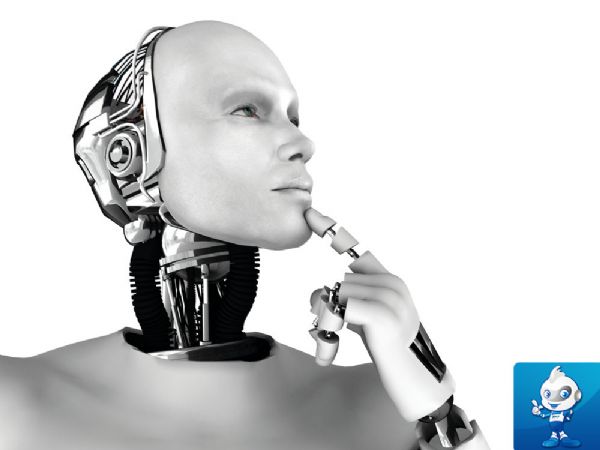The world is almost crazy because of the fear of the robot revolution, because articles are talking about it every day. However, all the hype, excitement, and sometimes worry, are these reasonable? Is the robot revolution really coming?
The answer is probably that in some areas of our lives, we will soon see more robots. But in fact, in the near future, we will not see dozens of robots walking in our streets or hanging out in our offices.
One of the main reasons is simple. The robot has not yet been able to really see the world. But before talking about future robots that might be seen, we should first consider what we mean by "seeing".
Most of us have two eyes, and we use these eyes to collect light that reflects objects around us. Our eyes convert light into electrical signals that are then sent to our optic nerves and finally processed by our brains.
Our brains take these electrical impulses as well as our experience and then take some sort of identification around what is around us. It builds a representative of the world, and we use it to navigate and help us pick up things so that we can see each other's faces and other things in the world.
This whole activity, from collecting light from our eyes to having an understanding of the world around us, means “lookingâ€.
Researchers have estimated that 50% of our brains are involved in the process of "seeing". Almost all animals in the world have eyes and can be seen in some way. Most of these animals, especially insects, have much simpler brains than humans and they function well.

Therefore, it is not surprising that many robotics researchers predict that if robots can see, we may actually see the robot boom, and robots may eventually become human helpers, loved by many people.
So how do we make the robot see it? The first part is very straightforward. We use a camera, just like your smartphone, to collect images in an endless stream. This is a big research area for robot camera technology, but now it is just a standard video camera. We pass these pictures to the computer and we make our own choices.
Since 1970, robotic vision engineers have thought about the characteristics of images. These may be lines, or interesting images like corners or certain textures. Engineers write algorithms to find these features and track them, from image frames to image frames in the video.
This step basically reduces the amount of data in millions of images to hundreds or thousands.
This is an important step in the process due to the limited computing power of the past. Then the engineer begins to think about what the robot might look at and what it needs to do. They started writing software that recognizes the world model to help the robot understand what is surrounding it.
The software can create a very basic environment map, and when the robot is operating, it can try to match by looking for many features already in the software library.
In essence, this robot programming is still going through humans to see what they think the robot needs to see. There have been many successful examples of this type of robot vision system, but today there are still no robots that can visually look at the world alone.
Such a system cannot be sufficiently reliable to keep the robot from jumping when it encounters an obstacle, and it cannot be used for a long time in actual use of the robot. The driverless cars reported in the media mainly use lasers or radars to make up for their lack of visual systems.
In the past five to ten years, a new robot vision research group has been formed. These researchers have shown that this new system is not programmed as before, but learns how to look.
The robotic vision system they developed was inspired by the scientists' view of how animals "look". That is, they use the concept of a neuron layer, just like an animal's brain. Engineers program the structure of the system, but they do not develop algorithms that run on the system. That is left to the robot itself to complete.
This technology is called robot learning, because we can now easily get the computing power of computers at a reasonable cost, and these technologies are all working! The investment in these technologies is also accelerating.
The point of making robots learn is that they can easily share their learning. A robot will not have to learn from the beginning like a newborn animal. A new robot can gain experience from other robots and build your own vision.
A robot can understand what a cat looks like and pass on that knowledge to thousands of other robots. More importantly, a robot can perform a complex task, such as navigating around a part of a city, and immediately share it with all other robots.
Equally important, these robots that share experience can learn together. For example, each robot can observe different cats individually, and then thousands of robots share data with each other via the Internet and learn to classify all cats together. This is an example of divisional learning.
The fact is that future robots will be able to share and divide learning, which will have a profound impact.
By self-learning the robot's data center, it's likely that your credit card transaction was detected as fraudulent. Anyone can't detect the fraud, and these systems can be discovered.
There are many applications for robots that can be seen. It's hard to resemble a robot like this, and it can't help our life.
The first use of the robots that can be seen is likely to be either an industry with a labor shortage problem, such as agriculture, or an industry that is inherently unattractive to humans, or a dangerous industry.
In the operating room, you will soon see a robot assisting the surgeon. The super vision of the robot and the ultra-precise, stable arms and hands will allow the surgeon to focus on what he is best at.
All the compostable shopping bags can be fully degraded, and have passed the American ASTM-D6400 and EU EN13432 compostable certification Standard test. Our compostable bags are made of 100% biodegradable resin as raw materials, free of plastic, non-toxic and harmless.
Bury the compostable shopping bags in the soil, or bury them in the environment with microorganisms.
The compostable bags can degrade 100% into carbon dioxide and water in 3 months and become organic
fertilizer without white pollution.

Compostable Shopping Bags,Compostable Waterproof Shopping Bags,biodegradable reusable bags
Shaoxing Lvxing New Material Co.,Ltd , https://www.chinabiodegradable.com